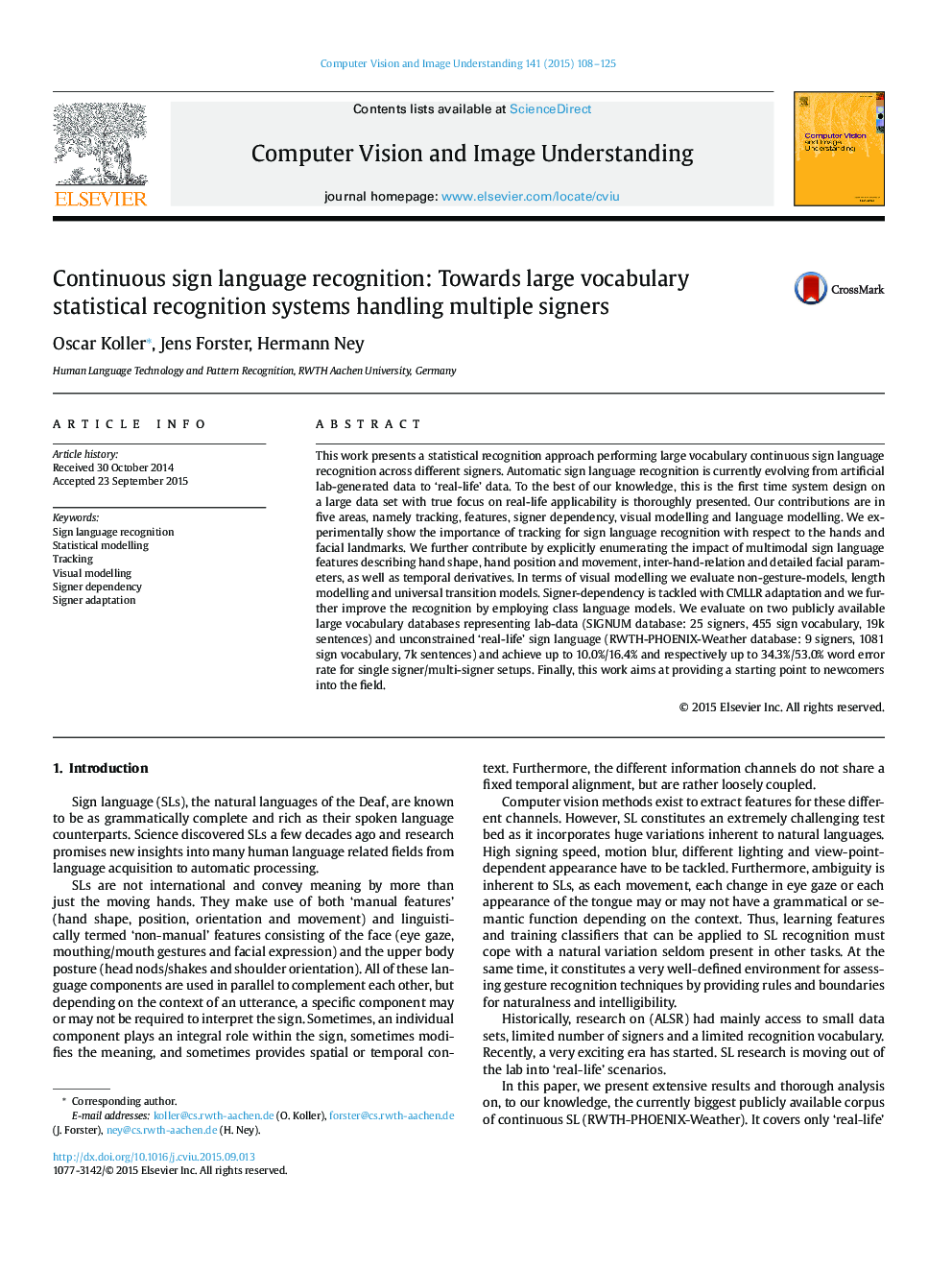| Article ID | Journal | Published Year | Pages | File Type |
|---|---|---|---|---|
| 527349 | Computer Vision and Image Understanding | 2015 | 18 Pages |
•Fully automatic, vision based sign language recognition system.•Evaluation of class language models, non-gesture modelling and signer adaptation.•Novel AAM based face features and combination of hand gesture and face features.•Guide to build ASLR systems with public RWTH-PHOENIX data opening field to newcomers.•Tackles tracking, features, visual modelling, signer dependency and language modelling.
This work presents a statistical recognition approach performing large vocabulary continuous sign language recognition across different signers. Automatic sign language recognition is currently evolving from artificial lab-generated data to ‘real-life’ data. To the best of our knowledge, this is the first time system design on a large data set with true focus on real-life applicability is thoroughly presented. Our contributions are in five areas, namely tracking, features, signer dependency, visual modelling and language modelling. We experimentally show the importance of tracking for sign language recognition with respect to the hands and facial landmarks. We further contribute by explicitly enumerating the impact of multimodal sign language features describing hand shape, hand position and movement, inter-hand-relation and detailed facial parameters, as well as temporal derivatives. In terms of visual modelling we evaluate non-gesture-models, length modelling and universal transition models. Signer-dependency is tackled with CMLLR adaptation and we further improve the recognition by employing class language models. We evaluate on two publicly available large vocabulary databases representing lab-data (SIGNUM database: 25 signers, 455 sign vocabulary, 19k sentences) and unconstrained ‘real-life’ sign language (RWTH-PHOENIX-Weather database: 9 signers, 1081 sign vocabulary, 7k sentences) and achieve up to 10.0%/16.4% and respectively up to 34.3%/53.0% word error rate for single signer/multi-signer setups. Finally, this work aims at providing a starting point to newcomers into the field.
